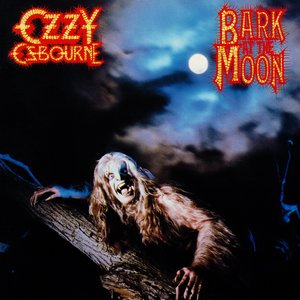Published on Oct 30, 2001
Bark At The Moon, Ozzy Osbourne’s 1983 release, has been
considered by many to be Osbourne’s weakest album. In a sense, one
wants to almost cut Osbourne a mile’s worth of slack; at the time,
he was losing a battle with the bottle and was still reeling from
the plane crash which took the life of guitarist Randy Rhoads. The
discovery of guitarist Jake E. Lee was a bit of a creative
inspiration for Osbourne, but musically he was still in a daze –
and, in a way, who could blame him?
Granted,
Bark At The Moon is not Osbourne’s best work, but it’s
hardly the turdburger that many want to write it off as. It has
more lows on it than fans were used to at that point in Osbourne’s
career, but there are enough signs that suggested that Osbourne was
rising like a phoenix from the ashes of his personal life.
Some of
Bark At The Moon‘s biggest flaws don’t lie squarely with
Osbourne. The drum work of Tommy Aldridge (who hooked up with
Osbourne for the
Speak Of The Devil live album) sounds far too simplistic and
tinny. Aldridge is a far better drummer than this record suggests,
and Osbourne’s music almost demands a stronger backbeat than what
is presented. Likewise, the combination of the production of Max
Norman (with Osbourne co-producing) and mixing by Tony Bongiovi is
just bad chemistry with Osbourne’s style of music. It’s almost as
if someone wanted to give a bit of flash to the tunes, and decided
to hire two of the best-known named in the field at the time. Bad
idea; Osbourne’s music suffers greatly as a result. Granted, Norman
was a veteran of Osbourne’s scene, but one wonders if he couldn’t
have used his influence to “toughen up” the overall sound.
Lee steps into a difficult role as the “replacement” for Rhoads,
yet he seems to decide early on that he’s going to follow his own
musical path and not try to mimic the stylings of a
classically-trained guitarist. Smart move, as Lee is given some,
but not enough, room to express himself. Some of the fault lies
with the music itself, but we’ll get to that momentarily.
Bark At The Moon is remembered best for three songs – the
first, naturally, being the title cut. While I’ve always liked this
song, here’s a prime example where the mixing falls flat (I’m
working from the original vinyl; things might have been improved on
the remixed CDs released a few years ago). Had this song been given
a deeper bass line, it would have improved things a hundredfold.
Still, this one does rank as one of Osbourne’s most enjoyable.
Some people may remember the completely whacked-out video for
“So Tired,” a song which could have easily described Osbourne’s
condition in 1983. It’s not typical of what Osbourne was known for
– egads, an actual
ballad! – but it does work. It hasn’t held up as well as I’d
have hoped (or maybe it’s that my memory of this song is rosier
than reality; this was the first time I’d listened to this record
in well over four years), but it shows the versatility of Osbourne.
The third track, “Waiting For Darkness,” seems to have fallen
through the cracks in recent years, but it proved to be a fitting
way to close this album way back when. (The remastered CD adds a
bonus track, “Spiders In The Night” – a song which I have yet to
hear.)
Still, there are some craters on
Bark At The Moon that show Osbourne was still trying to
re-gather his bearings after the events of the early ’80s. “You’re
No Different” is a ballad that simply fails from the beginning,
trying desparately to capture a neo-classical edge (and almost an
Edgar Allen Poe-like sense of doom with the synthesized strings)
and just missing the brass ring. This song, along with the abyssmal
“Slow Down,” are two examples of how Lee maybe wasn’t given nearly
enough room to develop his own guitar style, since the music
limited any real kind of freedom that Lee might have wanted.
“Rock & Roll Rebel” almost feels like Osbourne limply giving
the finger to all of his detractors; if only it were a stronger
vehicle for him to do so. In contrast, “Centre Of Eternity,”
despite a weaker bridge and too rapid-fire style of verses, does
have all the trappings to have become a classic Osbourne song had
it been given a fighting chance.
Bark At The Moon showed that Osbourne was a survivor,
despite all the nasty things that were happening to him at that
stage in his career. It’s not the greatest album in his
discography, but it most definitely has its moments.
